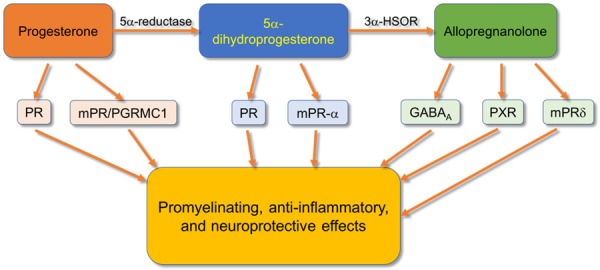Figure 3.

Compared to SCI controls, subjects receiving progesterone injections following injury exhibit reduced expression of TNF-α and subsequently iNOS, increased acetylcholine production and neuron growth through upregulation of choline acetyltransferase and brain-derived growth factor (BDNF), downregulation of NOS2, MCP-1, IL-1β, caspase-3, and GFAP. Observations have been noted of decreased chromatolysis, increased preservation of neuron structure, and a reduction of mitochondrial dysfunction in animals administered progesterone following SCI. It has been noted that progesterone and its metabolites 5a-dihydroprogesterone and allopregnanolone act on those receptors depicted to contribute to the mediation of the effects listed. In this schematic diagram, complete pathways are not depicted, but some of the major components are shown.
